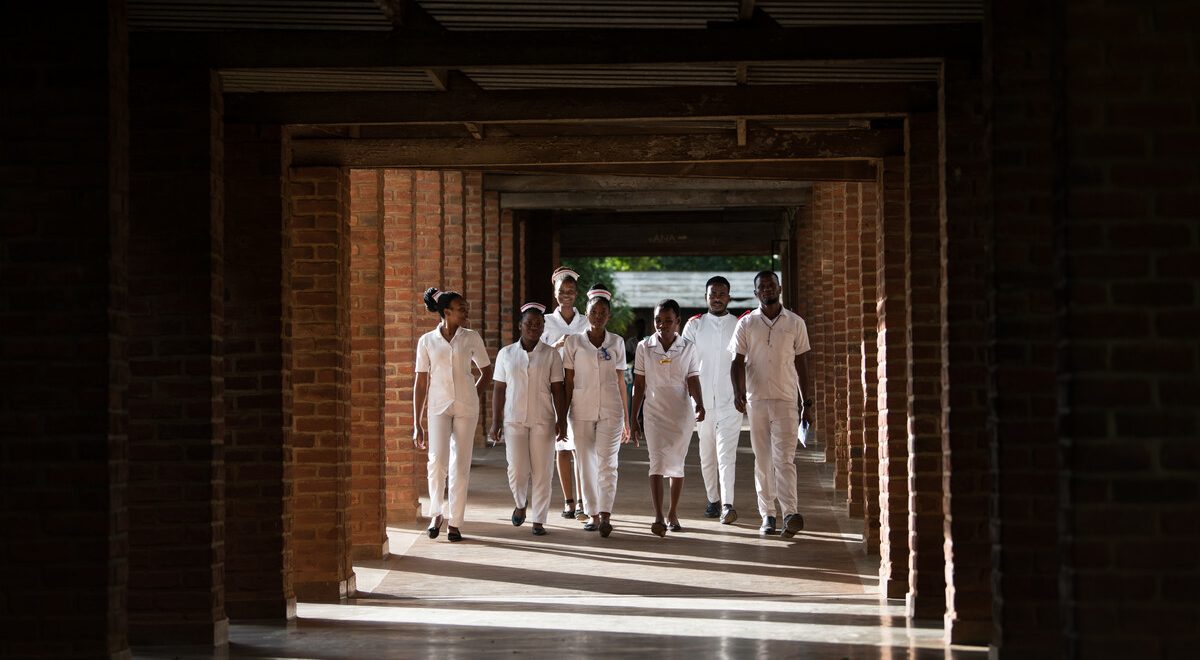This is a guest blog by Roos Saalbrink, Global Lead on Economic Justice and Public Services for ActionAid International
The current debt crisis[1] has become an accelerator of the climate crisis. Currently, countries do not have enough resources to respond to communities on the frontline of the climate crisis, leaving them exposed to more frequent and severe climate emergencies. The reinforcement of debt repayments at the cost of other government spending, such as health and education and much-needed climate adaptation and mitigation, severely impacts women and girls as involuntary shock absorbers. Women turn into de facto care providers by stepping into gaps caused by cuts to public services.
ActionAid research found that 93% of countries[2] at the forefront of climate disasters are drowning in debt. In practice, this means governments don’t have enough financial resources to repay their debts or fund and invest in health and education – let alone invest in adapting to increasing climate disasters. These debts are locking countries into a negative spiral, forcing governments to cut public spending and invest in things that aren’t good for the climate to pay back their debts.
This is being acutely felt by countries experiencing devasting climate disasters, for example, in Malawi, where half a million people have been displaced through flooding following Cyclone Freddy. Instead of the government being able to channel funds to rebuild and recover from the devastation, they are tied to paying back loans. On top of that, climate finance is largely being provided in loans[3], not grants, leading to even more debt. This adds insult to injury and is a gross injustice, as the people, communities, and countries on the frontline of the climate crisis are not responsible for causing the problem in the first place.
Women and girls are triply impacted.
We found that 38 out of 63 most climate-vulnerable countries are already spending so much on debt servicing that they are likely cutting spending on public services, making it impossible to invest in a more feminist and sustainable path.
Other countries, like Ghana, are even cutting funds to vital public services like health and education in order to keep up with debt repayments. Ghana will need about 60% of its debt canceled if it is to return to a path of sustainability.[4] Health spending has been in sharp decline, falling from 9.6% of the budget in 2016 to 5% in 2020. The share of the public sector wage bill in total expenditure has declined, as a surge in debt servicing has further eroded government budgets. At the same time, there are 41,000 unemployed nurses and over 47,000 vacancies in the health sector. The average doctor-to-population is 1:8132 – far exceeding the WHO global threshold of 1:1000.Women and girls end up triply disadvantaged. They are the first to lose access to public services, the first to lose frontline public service jobs, and the first to take on the burden of unpaid care, which rises when public services fail or when climate-induced disasters hit. Gender-responsive public services are central to a feminist just transition and extremely vital to building and maintaining resilient communities that can withstand and adequately respond to climate and other emergencies.
Another side to this vicious cycle continues with countries needing to repay these debts in foreign currencies, mostly U.S. dollars. To get this quickly, countries are often driven to invest in extractive industries like fossil fuels and large-scale industrial agriculture, which is harmful to the environment and contributes to climate change. This is just to keep on top of payments.
ActionAid took the top third of climate-vulnerable countries and found that nine countries most vulnerable to climate change, including Somalia, Malawi, and Mozambique, are already in debt distress. Beyond that, 40 climate-vulnerable countries are at moderate or high risk of debt distress, and only four countries being impacted by climate disasters are at low risk of debt distress.
This research raises worrying questions about how these countries can rebuild, adapt, and mitigate against frequent and intensifying climate disasters when they are forced to pay back their debts to the World Bank, International Monetary Fund (IMF), and private banks.
To stop this crisis, ActionAid is calling for the most climate-vulnerable countries to have their debts canceled, along with a radical reform of how global debt is managed.
At a time when we are seeing more frequent and severe climate emergencies, most proposals being considered for expanding climate finance focus on more loans. That’s why we are calling for a move away from loan-based climate finance to more public grants and progressive global tax reforms. This is the only way we can achieve real climate justice.
You can find the report here.
- [1] Ghana has just signed its 17th agreement with the IMF
- [2] Largely caused by external shocks, including the pandemic, rising energy and food prices, and interest rate increases in Europe and the US.
- [3] Of which data is available
- [4] Two-thirds of climate finance comes in the form of loans


